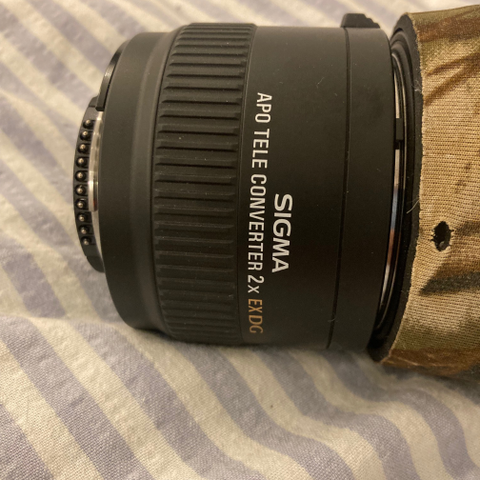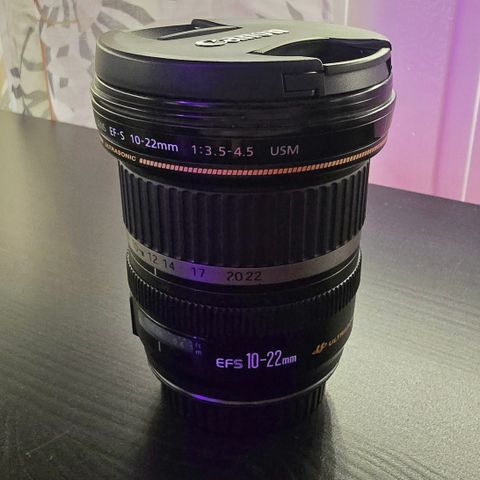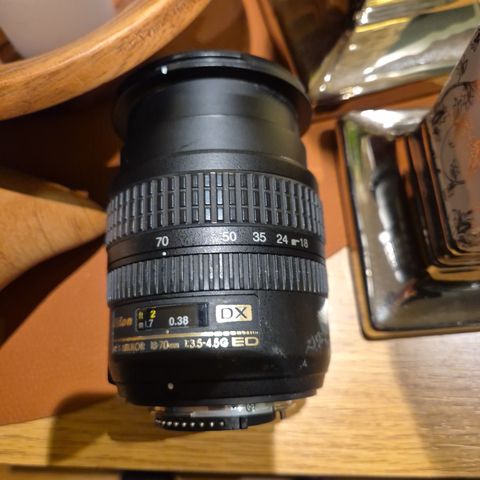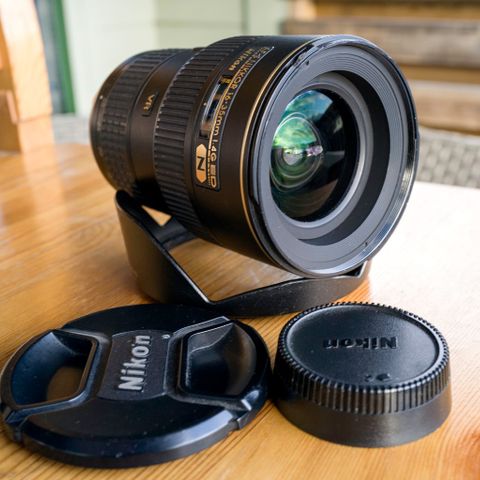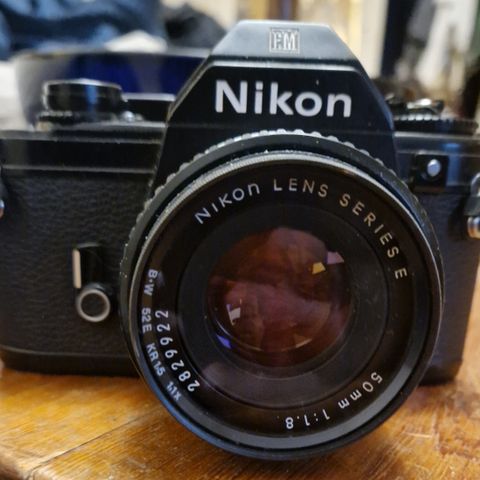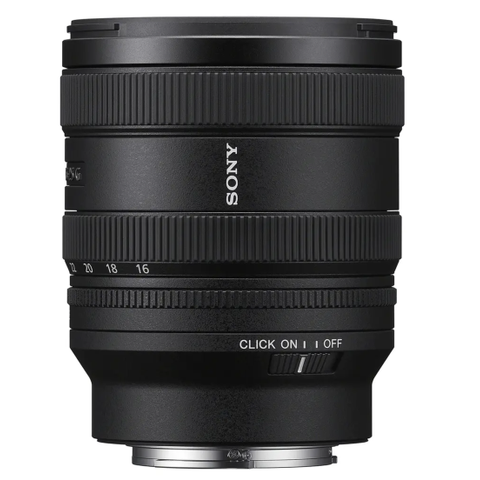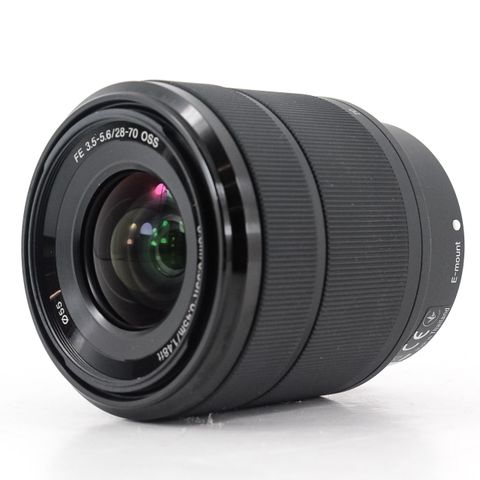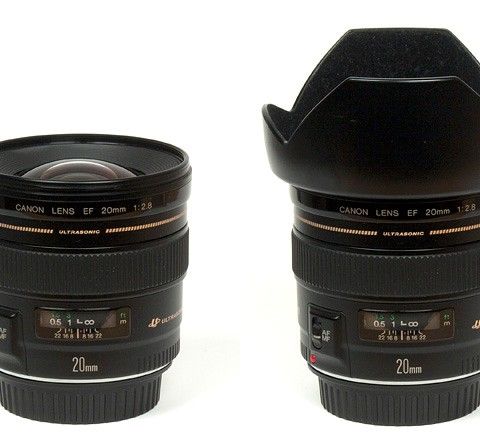Bildegalleri
Nikon Z6 med Z 35mm 1.8 & 120-300mm 2.8 - ALT FOR KUN 17500!!
Beskrivelse av varen
NYE PRISER I HELGA!
Nikon Z6 kamerahus : 7900
Viltrox 35mm 1.8 Z-mount : 2900
Sigma 120-300 DG OS HSM : 5900
The Viltrox AF 35mm f/1.8 is a full-frame autofocus lens available both for the Nikon Z system and for Sony E mount. At just $380, it undercuts lenses such as the Nikon Z 35mm f/1.8 ($850) and Sony FE 35mm f/1.8 ($750). But how does it perform? This review will answer any questions you might have!
The Viltrox AF 35mm f/1.8
Compared to other third-party lens manufactures like Sigma and Tamron, Viltox is definitely targeting a lower end of the market right now. That’s not necessarily a bad thing; lens prices have jumped significantly over the last several years, and some budget glass is definitely welcome. That’s where the Viltrox AF 35mm f/1.8 comes in.
NIKON Z 7 + Viltrox AF 35mm f/1.8 Z @ 35mm, ISO 64, 1/3, f/16.0
Viltrox AF 35mm f/1.8 Specifications
Full Name: Viltrox AF 35mm f/1.8 STM ASPH ED IF
Mount Type: Nikon Z and Sony E mounts
Focal Length: 35mm
Angle of View (Full Frame): 63°
Maximum Aperture: f/1.8
Minimum Aperture: f/16
Aperture Blades: 9, rounded
Filter Size: 55mm
Lens Elements: 10
Lens Groups: 8
Special Elements: 2 aspherical, 2 ED glass, 2 high refractive index
Anti-Flare Coating: Multi-layer nano coating
Vibration Reduction: No
Internal Focusing: Yes
Control Rings: Manual focus ring, clickless aperture ring
Function Buttons: No
Focus Motor: STM
Minimum Focus Distance: 0.40 meters (16 inches)
Maximum Magnification: 0.1× (1:10)
Mount Material: Metal
Weather/Dust Sealing: No
Dimensions (Length × Diameter): 90 x 70 mm (3.5 x 2.8 inches)
Weight, Nikon Version: 370 g (0.82 pounds)
Weight, Sony Version: 340 g (0.75 pounds)
MSRP: $380 (check current price)
These specs are surprisingly good for an inexpensive lens, especially the two aspherical and 3 extra-low dispersion glass elements. However, the lack of weather sealing is potentially a concern. At least the lens doesn’t extend when focused.
NIKON Z 7 + Viltrox AF 35mm f/1.8 Z @ 35mm, ISO 64, 1/200, f/11.0
Build Quality and Handling
Despite the low price, the Viltrox AF 35mm f/1.8 is an all-metal lens that feels nice and solid. If anything, I think that Viltrox went a bit too far with the metal construction – even the manual focus ring is metal and doesn’t have a rubber cover.
There’s also a dedicated aperture ring on the Viltrox AF 35mm f/1.8, and videographers will appreciate the clickless design. The ring is adjustable from f/1.8 to f/16 and is labelled in third-stop increments. If you’re not a fan of adjusting aperture directly on the lens, you can turn the ring all the way to the “A” position, which allows you to adjust aperture on the camera as usual.
The Viltrox AF 35mm f/1.8 has a dedicated aperture ring
There are no other buttons, switches, or rings on the Viltrox AF 35mm f/1.8 – it’s a very sparse lens with just the manual focus and aperture rings. I would have liked to see an A-M switch at the least, but no luck.
Interestingly, there is a USB-C port that could be very useful for updating the lens’s firmware in the future. Third-party autofocus lenses periodically run into issues with newer cameras (or firmware updates on existing cameras) that harm their autofocus performance. The USB-C port definitely makes the Viltrox AF 35mm f/1.8 more future-proof.
Note the USB-C port built into the bottom of the lens mount
As for the rest of the Viltrox’s build quality features (or lack thereof), the biggest thing that stands out to me is the lack of weather sealing. There is no rubber gasket near the lens mount, nor internal seals to keep out dust and moisture. This may not be a surprise, but it’s definitely disappointing.
The good news is that the Viltrox AF 35mm f/1.8 is a prime lens with no external moving parts, so it’s not going to become waterlogged the first time you step out in a drizzle. Even so, I definitely wouldn’t trust it in a downpour, and I’d be cautious when using it in windy, dusty environments.
Front element of the Viltrox AF 35mm f/1.8
The next page of this review covers the optical characteristics of the Viltrox AF 35mm f/1.8, including focusing performance and sharpness tests in the lab.
Nikon Z6
Mirrorless 24MP FX, IBIS, ISO 50~204,800, Silent 12 FPS
NEWEST: Nikon Z6 III
NEWER: Nikon Z6 II
Sample Images Intro Lens Compatibility
Adapted Rangefinder Lenses Specifications
Unboxing USA Version Performance
Compared User's Guide
Recommendations More
Z9 Z8 Z7 II Z6 III Z6 II Zf Z7 Z6 Z5 Z fc Z50 Z30
Z System Z Lenses All Nikon Lenses Flash
Nikon Z6
Nikon Z6 (23.5 oz./667g with battery and XQD card, about $700 used if you know How to Win at eBay.) and 24-70mm f/4 S. bigger.
Z6 body-only: $1,697 new at Amazon or about $1,000 used if you know How to Win at eBay.
Z6 with 24-70mm f/4: $2,075 at Amazon and $2,596 at B&H.
This all-content, junk-free website's biggest source of support is when you use those or any of these links to approved sources when you get anything, regardless of the country in which you live. Thanks for helping me help you! Ken.
July 2024, April 2023, Hot December 2019 Nikon Mirrorless Mirrorless Lenses All Nikon Lenses Nikon Flash All Reviews
Nikon Z6 Plain-English User's Guide
Nikon Z6 vs Z7
Nikon vs Canon vs Sony Full Frame Mirrorless Compared
Nikon Z6
Nikon Z6. bigger.
Nikon Z6
Nikon Z6. bigger.Please help KenRockwell.com
Sample Images
Top Sample Images Intro Lens Compatibility
Adapted Rangefinder Lenses Specifications
Unboxing USA Version Performance
Compared User's Guide
Recommendations More
(more at High ISOs)
These are all shot hand-held as BASIC ★ JPGs; no RAW files, NORMAL or FINE JPGs and especially no tripods were used or needed.
Nikon Z6 Sample Image of a green and blue pool float
Blue and Green Pool Float, 09 April 2019, 5:27 PM. Nikon Z6, 1946 5cm (50mm) f/2 NIKKOR-H•C on adapters, f/8 at 1/320 at Auto ISO 100, Perfectly Clear. bigger, full-resolution or camera-original © file.
Not bad for an old weathered pool float shot with an over-70-year-old lens. This lens was Nikon's first lens for its first camera made in occupied Japan a year after World War Two. The Z6 lets us adapt this and just about any lens to it for great results, complete with Image Stabilization!
Nikon Z6 with NIKKOR H-C 5cm f/2
Nikon Z6 and 1946 5cm (50mm) f/2 NIKKOR-H•C used to shoot the photo above. The lens is on a Nikon S rangefinder to LEICA M adapter which is on a second LEICA M to Nikon Z adapter. These adapters all come from eBay. bigger.
With a small zoom like the Nikon Z 24-70mm f/4 I can carry my Z6 everywhere to catch what I see as I run errands. Here are six shots made in three hours as I ran around town with my family, hardly a dedicated photo shoot:
Nikon Z6 Sample Image Blue Fountain
Blue Water, 19 March 2019, 2:31 PM. Nikon Z6, Nikon Z 24-70mm f/4 at 70mm, f/11 at 1/80 at Auto ISO 100, Perfectly Clear. bigger or camera-original © file.
Nikon Z6 Sample Image glass in dentist's office
Glass in Dentist's Office, 19 March 2019, 3:49 PM. Nikon Z6, Nikon Z 24-70mm f/4 at 52mm, f/4 at 1/60 at Auto ISO 900, Perfectly Clear. bigger, full-resolution or camera-original © file.
Nikon Z6 Sample Image Liquor on Bar
Liquor, 19 March 2019, 4:49 PM. Nikon Z6, Nikon Z 24-70mm f/4 at 45mm, f/8 at hand-held at 1/13 at ISO 800, Perfectly Clear. bigger or full-resolution.
Nikon Z6 Sample Image Latticework at Benihana
Benihana, 19 March 2019, 4:54 PM. Nikon Z6, Nikon Z 24-70mm f/4 at 24mm, f/4 at 1/25 at Auto ISO 100, Perfectly Clear. bigger or full-resolution.
Nikon Z6 Sample Image Las Vegas Roll at Benihana
Las Vegas Roll, 19 March 2019, 5:00 PM. Nikon Z6, Nikon Z 24-70mm f/4 at 70mm, f/16 at 1/40 at Auto ISO 12,800, Perfectly Clear. bigger, full-resolution or camera-original © file.
Nikon Z6 Sample Image Exploding Volcano Flame at Benihana Teppan Grill
Exploding Teppan Grill Volcano Flame, Benihana, 19 March 2019, 5:45 PM. Nikon Z6, Nikon Z 24-70mm f/4 at 70mm, f/4 at 1/40 at Auto ISO 1,250, Perfectly Clear. bigger or camera-original © file.
Nikon Z6 Sample Image
Helvetica, 06 April 2019. Nikon Z6, Nikon Z 24-70mm f/4 at 48mm, f/6.3 at 1/160 at Auto ISO 100, Perfectly Clear. bigger or full-resolution or camera-original © file.
Nikon Z6 Sample Image
Orange Granite on Green Grass, 06 April 2019. Nikon Z6, Nikon Z 24-70mm f/4 at 42mm, f/11 at 1/30 at Auto ISO 100, Perfectly Clear. bigger or full-resolution.
Nikon Z6 Sample Image
A Visit with the LEICAMAN on Lake Constance (Ein Besuch im der LEICAMAN am Bodensee), Lindau, Bavaria, 06 April 2019. Nikon Z6, Nikon Z 24-70mm f/4 at 70mm, f/11 at 1/30 at Auto ISO 100, Perfectly Clear. bigger or full-resolution.
Introduction
Top Sample Images Intro Lens Compatibility
Adapted Rangefinder Lenses Specifications
Unboxing USA Version Performance
Compared User's Guide
Recommendations More
New Good Bad Missing
GO
Adorama Pays Top Dollar for Used Gear
Amazon
[Go]
Crutchfield
I buy only from these approved sources. I can't vouch for ads below.
The Nikon Z6, along with its higher-resolution sister the Nikon Z7, has the same great Nikon feel, handling and image quality we've all come to love — except now in mirrorless form! The Z6 has all the usual Nikon controls in the usual places.
The Z6 has a full-frame sensor in a camera that weighs less than a DX D7500, and is built to the same standards as the D850.
It has hybrid phase & contrast autofocus over the entire frame, or over at least 90% of the frame, which is the same as the entire frame since you never put a point of interest on a frame line.
There is a new series of lenses for it, and of course there is an FTZ lens mount adapter so we can use our F-mount lenses. The short flange focal distance means you old-timers from the 1940s and 1950s will be able to mount your original S-mount Nikon rangefinder lenses (as well as LEICA M lenses). We can't do this with DSLRs because their mounts are too deep, but with the short mount of cameras without mirrors it's just a matter of time until someone makes these adapters.
The Z6 has sensor-shift image stabilization, and it works great, even with ancient 1940s rangefinder lenses!
This is huge milestone for Nikon that happens only once every couple of decades. Nikon's first 35mm camera was its Nikon S rangefinder system of 1946, its first SLR was the Nikon F of 1959 that was the world's first hugely popular SLR system on whose coattails Nikon still rides today, and the world's first real DSLR was the Nikon D1 of 1999. This is the biggest thing Nikon's done in this millennium.
Now with Nikon making pro mirrorless cameras that handle like real cameras, feel good in our hands, work like they're supposed to and offer Nikon's superior color rendition, Fuji can return to focusing on their core film and photo paper businesses and Sony can get back to innovating again in TVs and stereos. It might be time to sell your Sonys on eBay while they still get top dollar.
I'd get my Z6 used at eBay (How to Win at eBay).
New
blue ball icon © KenRockwell.com Nikon's first full-frame mirrorless, along with the Nikon Z7.
blue ball icon © KenRockwell.com Full Frame Autofocus. You have sensors all over the entire frame!
blue ball icon © KenRockwell.com Electronic finder shows what you're shooting, and it also can show all the menus and playback and magnified images!
blue ball icon © KenRockwell.com Perfect focus accuracy every time, especially at f/1.4! Focus is read directly from the sensor, so there is never any potential error (other than your own ineptitude) and never any need for AF fine tuning. DSLR and SLR systems always have some small error because the focus is read from AF sensors coupled with mirrors, which always have some mechanical error needing adjustment. For the first time we can shoot our f/1.4 and f/0.95 lenses with perfect accuracy.
blue ball icon © KenRockwell.com Completely silent operation.
blue ball icon © KenRockwell.com In-camera five-axis image stabilization adds 5-stop VR to Nikkor Z lenses and adds 3 stops of VR to everything else.
blue ball icon © KenRockwell.com 3,686,400 dot OLED finder: 100% coverage, 0.80× magnification, 37º apparent angle of view.
blue ball icon © KenRockwell.com No need for the rear LCD or top OLED; you can see everything through the finder.
blue ball icon © KenRockwell.com Crud-resistant fluorine-coated finder eyepiece.
blue ball icon © KenRockwell.com New "Z" lens mount with ultra-short 16.00mm flange-sensor distance which uses a new BF-N1 body cap.
blue ball icon © KenRockwell.com Larger 55mm diameter lens mount allows crazy-fast lenses, like a new f/0.95, to be designed and used.
blue ball icon © KenRockwell.com New FTZ lens mount adapter for traditional F mount SLR and DSLR lenses.
blue ball icon © KenRockwell.com 20 new gimmick Picture Controls, each with a 0~100% strength option.
blue ball icon © KenRockwell.com "Mid-range" sharpening option.
blue ball icon © KenRockwell.com 4K UHD (3,840 × 2,160/29.97p) 10-bit N-log video with timecode.
blue ball icon © KenRockwell.com 1,920 × 1,080 at 120 FPS.
blue ball icon © KenRockwell.com Takes an XQD card, not SD and not CF.
blue ball icon © KenRockwell.com MB-N10 multi-battery grip for two EN-EL15b is under development.
Good
green ball icon © KenRockwell.com Full Frame Autofocus. You have sensors all over the entire frame!
green ball icon © KenRockwell.com Excellent in-camera sensor-shift image-stabilization works great with any lens of any brand.
green ball icon © KenRockwell.com Optional setting for completely silent operation.
green ball icon © KenRockwell.com Three user presets on the top dial: U1, U2 and U3. Hallelujah!
green ball icon © KenRockwell.com Optional square 1:1 and 16:9 crops as-shot. I usually shoot in 1:1 since the native 3:2 is usually to long and skinny for me, and with square images I never have to turn the camera to shoot verticals.
green ball icon © KenRockwell.com Ultra-short 16mm Flange Focal Distance (FFD) allows all other brands of DSLR, SLR and rangefinder lenses to be adapted to it.
green ball icon © KenRockwell.com HDR.
green ball icon © KenRockwell.com Flicker shoot-through, possibly the first mirrorless camera to be able to do this.
green ball icon © KenRockwell.com Superior Nikon image quality for colors and dynamic range. No longer do we have to settle for inferior Sony or Fuji color rendition just to get mirrorless!
green ball icon © KenRockwell.com We can use our entire bank of over 70 years of Nikon rangefinder, SLR and DSLR lenses, with the FTZ lens mount adapter for Nikon F lenses and third-party adapters for everything else — and the camera adds VR to non-VR lenses!
green ball icon © KenRockwell.com Crud-resistant fluorine-coated finder eyepiece.
green ball icon © KenRockwell.com Aspherical eyepiece elements.
green ball icon © KenRockwell.com Wi-Fi and Bluetooth.
green ball icon © KenRockwell.com Multiple exposures.
green ball icon © KenRockwell.com Uses standard EN-EL15 and EN-EL15a batteries from Nikon's DSLRs, as well as its included newer EN-EL15b.
green ball icon © KenRockwell.com Uses standard WT-7/A/B/C wireless transmitters.
green ball icon © KenRockwell.com Flash system fully compatible with Nikon's existing DSLR flashes, with both optical and radio remote control.
Bad
red ball icon © KenRockwell.com The new FTZ adapter autofocuses only with Nikon's newest lenses with a built-in AF motor (AF-S and AF-P). It does not autofocus with any other lenses. The FTZ is a dud for those of us with a large collection of Nikon lenses because it only works (autofocuses or indexes properly) with about half of them. Nikon likes to forget to mention that all traditional AF and AF-D (screw-type) lenses will not autofocus. The FTZ works very poorly with manual-focus F, AI , AI'd and AI-s lenses, having no diaphragm control meaning you have to open and close the diaphragm manually for precise focus before and after each shot, has no exposure or EXIF data so you have no in-finder indication of aperture and have no EXIF aperture data, and there is no Matrix metering, Program or Shutter-priority automation with manual-focus lenses — which offer all these functions and more if used on 1984's Nikon FA! Worse, the Z6's automatic viewfinder brightness varies all over the place as you change the aperture on a manual lens. F, AI , AI'd, AI-s, AF and AF-D lenses, many of which Nikon still sells new today, work much better on any FX DSLR like a D750. Poo!
red ball icon © KenRockwell.com Face-recognition works poorly, making this a bad camera for photographing groups of people. While it recognizes faces well, what it can't do is identify which of many faces is the correct face on which to focus. Therefore it usually picks a random face in the background, giving an out-of-focus picture. Yes, you can click the rear controller left and right to select among the faces manually, but as anyone who shoots for a living can tell you, we don't have to time to select among ten faces when other cameras like Sony and Canon and Fuji and especially my iPhone all just find the correct face automatically. I usually get better shots of groups of fast-moving kids at school on my iPhone Xs Max.
red ball icon © KenRockwell.com Auto AF-Area Select works poorly; this and the Z7 are the only cameras I've used with AF intelligence so bad that they will ignore a big, closer, subject in the middle of the frame and deliberately and consistently prefer to focus on random background items in the corners unless I grab the manual focus ring and bring the subject into focus myself first. Other cameras or an iPhone is much better at this important item.
red ball icon © KenRockwell.com No AF MODE (M, AFC, AFS) switch; you have to assign a button and use dials to set this.
red ball icon © KenRockwell.com AF zones turn RED when in-focus and ready to shoot in continuous AF (AF-C) mode, not Green as they should and as they do in single (AF-S) mode.
red ball icon © KenRockwell.com Very low-light autofocus isn't very good, sort of like the D610, and the viewfinder gets much noisier than Canon or Sony in very low light (very low light means light so dark you can't read a printed page easily).
red ball icon © KenRockwell.com U1, U2 & U3 user preset modes only store and recall 2/3 of what you need; most of the SETUP menu options like display brightness, advance mode and image crop are not saved or recalled.
red ball icon © KenRockwell.com The complete camera settings backup and restore to the card function is defective. While you can save and recall the entire camera setup (custom settings, image settings, copyright data & etc.), paradoxically U1, U2 & U3 user preset modes and the contents of the My Menu menu are not saved or recalled! In other words, the complete camera-state backup to card function is defective in that it does not restore all the camera's settings as every other Nikon with this feature does, except also the sister Z7. This makes this feature mostly worthless if you use it as I do to provision my fleet of Nikon Z6. This is inexcusable and could be fixed in firmware — but only if Nikon bothers.
red ball icon © KenRockwell.com Like most or all regular cameras, does a crummy job of capturing stills while rolling video. Again my iPhone Xs Max does a much better job here.
red ball icon © KenRockwell.com Adds a junk file named "NC_FLLST.DAT" to each image folder.
Missing
gray ball icon © KenRockwell.com No second card slot.
gray ball icon © KenRockwell.com No SD card slot; takes only XQD cards.
gray ball icon © KenRockwell.com No built-in flash.
gray ball icon © KenRockwell.com Finder data doesn't rotate when held vertically.
gray ball icon © KenRockwell.com The Z6 can't track exposure at the advertised 12 FPS "extended" frame rate; at that rate it shoots the sequence with locked exposure, although focus attempts to track. The real still frame rate is 5.5 FPS with exposure tracking for each frame.
gray ball icon © KenRockwell.com The new FTZ adapter autofocuses with F-mount lenses with a built-in AF motor (AF-S and AF-P), but does not autofocus with traditional AF and AF-D (screw-type) lenses.
gray ball icon © KenRockwell.com Nikon specifies no battery life figure.
gray ball icon © KenRockwell.com No auto brightness control for the rear LCD; heck, even my iPhone does this. (the finder does have auto brightness control).
gray ball icon © KenRockwell.com No AF-A mode (automatic selection between single AF-S and continuous AF-C modes).
gray ball icon © KenRockwell.com No GPS, but you might be able to tag images using your phone over an app.
gray ball icon © KenRockwell.com No 4:3 or 4:5 crops, but does have square 1:1 and 16:9 crops. (Oddly the Z7 has the 4:5 crop).
gray ball icon © KenRockwell.com No voice notes like the D5; wait for the Z9 next year.
gray ball icon © KenRockwell.com MB-N10 multi-battery grip for two EN-EL15b is still under development.
gray ball icon © KenRockwell.com Unlike the Z7, the Z6 does not include a EH-7P Charging AC Adapter. The Z6 does include the MH-25A external battery charger, but I always charge via USB and ignore these.
Lens Compatibility
Top Sample Images Intro Lens Compatibility
Adapted Rangefinder Lenses Specifications
Unboxing USA Version Performance
Compared User's Guide
Recommendations More
I'd get my Z6 used at eBay (How to Win at eBay).
Nikon Z6
Nikon Z6. bigger.
The Z6 uses a brand-new Nikon Z mount optimized for Nikon's new Z-mount mirrorless S lenses. It has a 55mm inner diameter, larger than the old F mount, and has a flange focal distance of only 16.00mm.
This is the shortest distance between flange and sensor of any pro camera: Sony E is 18.00mm, Fuji X is 17.70mm. Canon RF is 20.00mm, LEICA M is 27.80mm, Contax G is 29.00mm, Nikon's 1950s rangefinder S-mount is 34.85mm. Canon EF is 44.00mm and Nikon F is 46.5mm, so there is always enough room for someone to machine an adapter ring to go between anything and this new Nikon Z mount.
DX Z Lenses
Ideally only use FX lenses on this FX camera.
The DX 16-50 and DX 50-250mm are superb lenses, and the Z6 automatically crops its sensor to DX, but by doing this you're throwing away more than half your sensor area and getting less resolution than by shooting these lenses on a Z50.
Be sure to update your Z6 firmware to get optical VR with these lenses.
FTZ Adapter
I have an entire page on what works and doesn't work with Nikon's FTZ adapter, which lets Nikon's F-Mount lenses mount on a Z camera.
In short, all the newest AF-I, AF-S and AF-P lenses work fine with Nikon's FTZ adapter, while there is no autofocus with any other lenses, and especially no autofocus with older AF and AF‑D lenses, many of which Nikon still sells new today.
Manual-Focus F, AI converted, AI and AI‑s don't work very well, with no communication or control of aperture. Manual-focus lenses work much better on any FX DSLR than on the FTZ.
See all the details at Nikon FTZ Compatibility & Review.
Fringer Canon EF-to-Nikon Z Adapter
Adapts Canon EF lenses with often better results on my Nikon Z cameras than Nikon's own lenses give on this crappy FTZ adapter! It also works with other brands of lenses in Canon EF mount, adapting them to Nikon Z.
Adapted Rangefinder Lenses
Nikon Z7 with 1950s Rangefinder Lens
Nikon Z7 with W-NIKKOR•C 3.5cm f/1.8 (1956~1964). bigger.
You don't need and can't use the FTZ Adapter with rangefinder lenses. These lenses have to get closer to the sensor, and are the original mirrorless lenses. This is good, because we can get basic adapters cheap direct from China over eBay for just about any kind of lens.
In fact, we now can use even Nikon's original 1940s-1960s rangefinder lenses on the Z6!
LEICA's lenses for the LEICA M3 with goggles work great, too!
See Use with Adapted Rangefinder Lenses for more.
Palm and Storm, 29 November 2018
Palms and Storm, 6:21 PM, 29 November 2018. 2018 Nikon Z7 with 1956 W-NIKKOR•C 3.5cm f/1.8 (see Adapting Rangefinder Lenses to Nikon Mirrorless), f/4 at 10 seconds at ISO 64, shown exactly as shot. bigger or camera-original © file. The palm tree is blowing all over in the wind; don't expect it to be museum-sharp.
Specifications
Top Sample Images Intro Lens Compatibility
Adapted Rangefinder Lenses Specifications
Unboxing USA Version Performance
Compared User's Guide
Recommendations More
I'd get my Z6 used at eBay (How to Win at eBay).
Autofocus
273 AF points.
Phase and contrast detection.
90% linear frame coverage.
Range: LV -1 ~ +19 (no lens specified); LV -4 ~ +19 with "low light AF" (again no lens specified).
Distance-Axis AF Modes
AF-S (single and lock), AF-S (continuous tracking) with predictive tracking.
"Full-time" AF-F in movie mode only.
Manual focus.
Electronic rangefinder.
AF-Area Selection Modes (X & Y axes)
Auto area selection.
Pinpoint (still photo mode only).
Single-point.
Dynamic area AF (still photo mode only).
Wide-area AF (S or L).
Image Sensor
Nikon Z6
Nikon Z6. bigger.
23.9 × 35.9 mm backside-illuminated CMOS with phase-detection AF pixels.
24 MP.
Ultrasonic cleaner.
Image Dust Off reference data (requires Capture NX-D).
ISO
ISO 100 ~ 51,200.
Pullable to ISO 50 and pushable to ISO 204,800.
Image Stabilization
5-axis in-camera sensor-shift.
Works great with VR lenses, too.
Additional electronic stabilization for video.
Rated 5 stops with Nikon Z mount lenses, 3-stops with non-VR F-mount lenses.
With F-mount VR lenses the camera corrects roll while the lens corrects pitch and yaw.
With F-mount non-VR lenses the camera corrects roll, pitch and yaw.
Auto ISO
Programmable for high and low limits from ISO 100 to ISO 204,800.
Still Image Sizes
Full-Frame
6,048 × 4,024 pixels native (Large, 24.34 MP)
4,528 × 3,016 (Medium, 13.7 MP)
3,024 × 2,016 (Small, 6.1 MP)
Cropped
4:5 (24 × 30mm)
NO 4:5 crop; you need the Z7 for that.
Square 1:1 (24 × 24mm)
4,016 × 4,016 (Large, 16.1 MP)
3,008 × 3,008 (Medium, 9.0 MP)
2,000 × 2,000 (Small, 4.0 MP)
16:9 (20 × 36mm)
6,048 × 3,400 (Large, 20.6 MP)
4,528 × 2,544 (Medium, 11.5 MP)
3,024 × 1,696 (Small, 5.1 MP)
DX (16 × 24mm)
3,936 × 2,624 (Large, 10.3 MP)
2,944 × 1,968 (Medium, 5.8 MP)
1,968 × 1312 (Small, 2.6 MP)
Stills grabbed while rolling in 4K
3,840 × 2,160
Stills grabbed while rolling video in any other size
1,920 × 1,080
Frame Rates (Still images)
12 FPS, continuous high "extended." (only 9 FPS in 14-bit raw.) In this "extended" mode it can't track exposure between frames and instead shoots every frame in the sequence at the same locked exposure. I'm unsure if autofocus tracks at this highest rate.
5.5 FPS, Continuous High, with tracking exposure for each frame.
1~5 FPS (adjustable) Continuous Low.
Still Formats
TIFF, JPG and/or raw.
JPG saved as LARGE, MEDIUM or SMALL resolution in FINE, NORMAL or BASIC compression.
Raw saved as 12- or 14-bit uncompressed, lossy or losslessly compressed at full LARGE resolution.
Raw also may be saved at MEDIUM or SMALL resolutions, but at only 12-bit lossless compressed.
sRGB and Adobe RGB.
Picture Controls
Auto, Standard, Neutral, Vivid, Monochrome, Portrait, Landscape and Flat.
Gimmick Picture Controls: Dream, Morning, Pop, Sunday, Somber, Dramatic, Silence, Bleached, Melancholic, Pure, Denim, Toy, Sepia, Blue, Red, Pink, Charcoal, Graphite, Binary and Carbon.
Of course these each can be adjusted and saved, and apply to both still images and video.
Video
Video Frame Sizes and Rates
3,840 × 2,160 (4K UHD 10-bit); 29.97p (progressive), 25p, 23.976p.
1,920 × 1,080; 119.88p, 100p, 59.94p, 50p, 29.97p, 25p, 23.976p.
1,920 × 1,080 (slow-mo); 29.97p ×4, 25p ×4, 23.976p ×5.
Different compression ratios (quality settings) selectable at all sizes except 3,840 × 2,160, 1,920 × 1,080 119.88p/100p, and 1,920 × 1,080 slow-mo, where quality is fixed at high.
Video File Formats & Coding
MOV and MP4.
H.264/MPEG-4 Advanced Video Coding.
AAC and LPCM audio coding.
Video Features
Uses the same Picture Controls as still images.
Active D-Lighting, electronic vibration reduction, and focus peaking can be used with 4K UHD and 1,080 movie recording.
The N-Log color profile can also be used with 10-bit HDMI output. The N-Log setting utilizes extensive color depth and twelve-stop, 1,300% dynamic range to record a wealth of tone information from highlights and shadows for more effective color grading.
Timecode.
Time-lapse.
Electronic vibration reduction.
29:59 (a half hour) maximum take length.
Audio
Recorded only along with video.
Stereo microphones built in.
Mic-in jack with plug-in power overrides built-in mic.
Headphone jack.
Linear PCM or AAC coding.
Metering Modes
Matrix.
75% center-weighted in center 12mm.
Full-frame unweighted average.
4mm spot on selected AF point.
Highlight-weighed.
Metering Range
LV -3 ~ +17 with an f/1.4 lens at 20º C.
Finder
Crud-resistant fluorine-coated finder eyepiece.
Aspherical eyepiece elements.
0.5" (12.7mm) 1,280 × 960 pixel OLED.
3,686,400 dots.
4:3 aspect ratio.
Auto (or manual) brightness control.
0.80× magnification with 50mm lens.
-4 to +2 diopters.
21 mm eyepoint.
Auto eye sensor selects read LCD or finder.
Shutter
Vertical Metal Focal Plane and silent electronic shutters.
Also a third option for Electronic First Curtain. More at my Nikon Z6 User's Guide.
1/8,000 ~ 32 seconds, Bulb.
1/200 flash sync speed.
Self Timer.
Multiple Exposures (standard, average, lighten or darken modes).
Tested to 200,000 cycles.
Remote Releases
Nikon MC-DC 2 and similar.
Flash
1/200 flash sync speed.
Auto FP High Speed Sync.
Standard i-TTL system.
Balanced fill-flash in matrix, center-weighted, and highlight-weighted metering modes. The flash level balances with ambient light.
Standard i-TTL fill-flash in spot metering. The flash exposure takes precedence over ambient light.
Front-curtain sync, slow sync, rear-curtain sync, red-eye reduction, red-eye reduction with slow sync and slow rear-curtain sync modes.
i-TTL flash control, radio-controlled Advanced Wireless Lighting, optical Advanced Wireless Lighting, modeling illumination, FV lock, Color Information Communication, Auto FP High-Speed Sync and unified flash control.
Built-in Flash
NONE.
Lenses
All Other Nikon Lenses (DSLR, Film & etc.)
Z9 Z8 Z7 II Z6 III Z6 II Zf Z7 Z6 Z5 Z fc Z50 Z30
Z System Z Lenses All Nikon Lenses Flash
Teleconverters Adapters Comparisons Roadmaps
FTZ Adapter EF-NZ Adapter TC-1.4× TC-2×
FX Full Frame Z
14-24mm f/2.8 14-30mm f/4
NEW: Viltrox 16mm f/1.8
17-28mm f/2.8
Full-Frame Ultrawides Compared
20mm f/1.8 24mm f/1.8 24-50mm f/4-6.3
24-70mm f/4 24-70mm f/2.8
Nikon Full-Frame Z Midrange Zooms Compared
24-120mm f/4 24-200mm VR
NEW: 28-400mm VR
26mm f/2.8 Pancake
28mm f/2.8 28mm f/2.8 SE
28-75mm f/2.8 35mm f/1.8
NEW: 35mm f/1.4
40mm f/2 40mm f/2 Special Edition
50mm f/1.2 50mm f/1.8 50mm f/2.8 Macro
58mm f/0.95 Noct "Eye of God"
70-180mm f/2.8 70-200mm f/2.8 VR
85mm f/1.2 85mm f/1.8 NEW: AstrHori AF 85mm f/1.8
100-400mm f/4.5-5.6 VR
105mm f/2.8 VR Macro
135mm f/1.8 "Plena"
NEW: 180-600mm f/5.6-6.3 VR
400mm f/4.5 VR NEW: 400mm f/2.8 VR
NEW: 600mm f/6.3 VR also at Adorama
NEW: 600mm f/4 TC VR also at Adorama and at Crutchfield
NEW: 800mm f/6.3
DX APS-C Z
NEW: 12-28mm f/3.5-5.6 PZ VR DX
16-50mm VR DX 18-140mm VR DX
24mm f/1.7 DX
50-250mm VR DX
External Flash
Dedicated ISO-518 hot shoe.
LCD Monitor
Nikon Z6 LCD
Nikon Z6 3.2" flipping LCD. bigger.
3.2" (8 cm) diagonal.
Touch screen.
2,100,000 dots.
170º viewing.
Manual brightness control only.
It flips up and down, but doesn't flip 180º so you can't use it for self-portraits.
Top OLED Display
Yes, monochrome.
Du må være logget inn for å se brukerprofiler og sende meldinger.
Logg innAnnonsens metadata
Sist endret: 30.8.2024, 16:41 ・ FINN-kode: 368053661




























